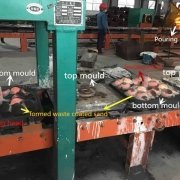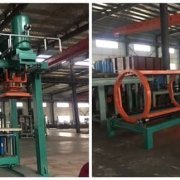Optimizing Efficiency: Exporting Cutting-Edge Grinding Balls Production Lines
The grinding balls industry plays a crucial role in various sectors, including mining, cement, and power generation. As global demand for high-quality grinding media increases, many manufacturers are expanding their production capabilities and exploring export opportunities. This article outlines the key aspects of grinding balls production lines and the export process, highlighting trends, challenges, and best practices.
Grinding balls are essential for the efficient grinding of materials in industrial processes. They are typically made from materials such as steel, ceramic, or cast iron and come in various sizes and compositions. The choice of grinding media depends on factors such as the type of mill, the material being processed, and the required grinding efficiency.
Production Line Components
A typical grinding balls production line includes several key components:
Raw Material Preparation: This involves sourcing high-quality raw materials, such as steel scrap or iron ore, and preparing them for processing.
Melting and Casting: The raw materials are melted in induction furnaces and poured into molds to form grinding balls. This process requires precise temperature control to ensure uniform quality.
Heat Treatment: After casting, the grinding balls undergo heat treatment to enhance their hardness and wear resistance. This step is critical for achieving optimal performance.
Grinding and Polishing: Once heat-treated, the balls are ground and polished to achieve the desired surface finish and dimensional accuracy.
Quality Control: Rigorous quality control measures are implemented throughout the production process to ensure that the grinding balls meet industry standards and customer specifications.
Packaging and Shipping: Finally, the finished products are packaged for export, ensuring that they are protected during transit.
Exporting Grinding Balls
Market Research: Before entering international markets, manufacturers should conduct thorough market research to identify potential customers, understand market demands, and analyze competitors.
Compliance and Regulations: Exporting grinding balls requires compliance with various international standards and regulations. Manufacturers must ensure that their products meet the quality and safety standards of the target market.
Logistics and Distribution: Effective logistics planning is essential for timely delivery. Manufacturers should establish reliable shipping routes and consider partnerships with freight forwarders to streamline the export process.
Marketing Strategies: Utilizing digital marketing, trade shows, and industry publications can help manufacturers promote their grinding balls to potential international buyers. Building a strong online presence is increasingly important in reaching global customers.
Building Relationships: Establishing strong relationships with distributors and clients in target markets can lead to repeat business and referrals. Personal visits and effective communication are key to building trust and credibility.
Challenges in Exporting
Quality Assurance: Ensuring consistent quality can be challenging, especially when scaling production for export. Regular audits and certifications can help maintain high standards.
Trade Barriers: Tariffs and import restrictions in certain countries can affect pricing and market entry strategies.
Cultural Differences: Understanding cultural nuances and business practices in target markets is essential for successful negotiations and partnerships.
The grinding balls production line presents significant opportunities for manufacturers looking to expand into international markets. By focusing on quality, compliance, and effective marketing strategies, companies can successfully navigate the complexities of exporting. As global demand for high-performance grinding media continues to rise, manufacturers that adapt to changing market conditions will thrive in the competitive landscape.





